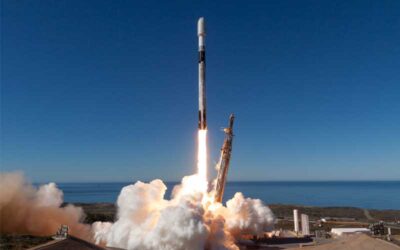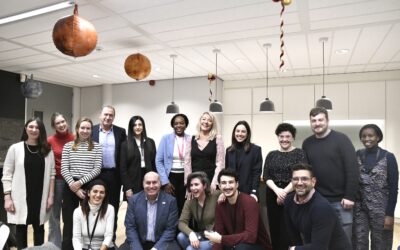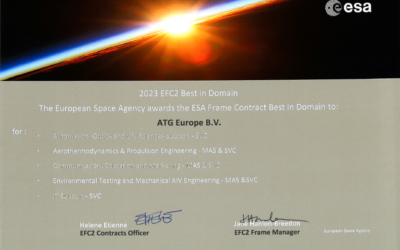EMPLOYEE SPOTLIGHT : Sentinel-5 found its best match with Functional AIT engineer – Tejal THAKORE
This week we have had the chance to meet our colleague, Tejal THAKORE – Functional AIT engineer currently working for Sentinel-5/UVNS’s optical instrument at Airbus Defense & Space on behalf of ATG Europe. Find out more about what drives her in supporting a part of the most important Earth Observation’s mission in the world.
While being a very talented engineer, Tejal is also an activist and engaged individual in encouraging and engaging women in STEM sectors. Tejal is not only a remarkable engineer, but she is also passionate and strong willed in bringing light to sensitive topics such as how to challenge gender bias and cultural issues against women studying and working in STEM areas.
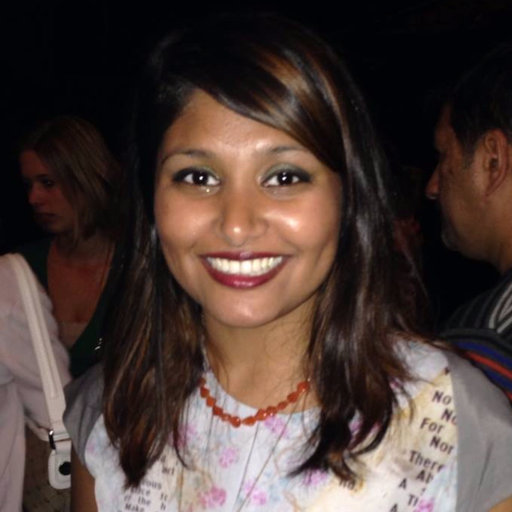
Tejal Thakore
Functional AIT Engineer
Thus, it felt important for Tejal to have a special mention for all the women in STEM in making this interview, destined those aspiring to work in domains which might seem impossible today, to those who wish to reach for their dreams. Dare mighty things! – Tejal Thakore
Thank you for taking the time Tejal – First of all, would you tell us more about you, your background and how you came to work for us at ATG Europe?
I was born in India where I attended my early schooling up until obtaining my GCSEs. I then transferred to the UK for my higher education for my A-levels to the city of Bath. Seeking a university with a strong background in Astronautics, I choose Kingston University for my Bachelor of Engineering which also allowed me to get involved in exciting conferences organised by UKSEDs and SGAC (Space Generational Advisory Council). With a keen interest in planetary defense projects, I led the Move an Asteroid Competition for 4 years within SGAC. Instead of pursing a master’s degree, I wanted to kickstart my professional career and I went on to find various internships – The first was in technical communications department at Premier Farnell HQ for 3 months based in London, UK; and the second at Clyde Aerospace Ltd. working as a Junior AIT Engineer. They were the prime contractor for UK Space Agency’s fully funded first CubeSat. My role involved testing palm sized solar arrays and turning CAD designs into intermediate engineering models. My first STM model helped me learn a lot… (chuckles) I loved it, as this experience took me to the clean room, and I got the chance to work in a start-up of merely 20 people to what it is today.
I was proposed to continue but at the same time I was offered a full-time position at Galileo Control Center in Oberpfaffenhofen (near Munich) to work for the Galileo mission. Here, I got the chance to meet my dear friend Aditi SATHE. We worked within the same team where I was responsible for platform subsystems including AOCS, Power and Thermal subsystem as a Spacecraft Operations Engineer.
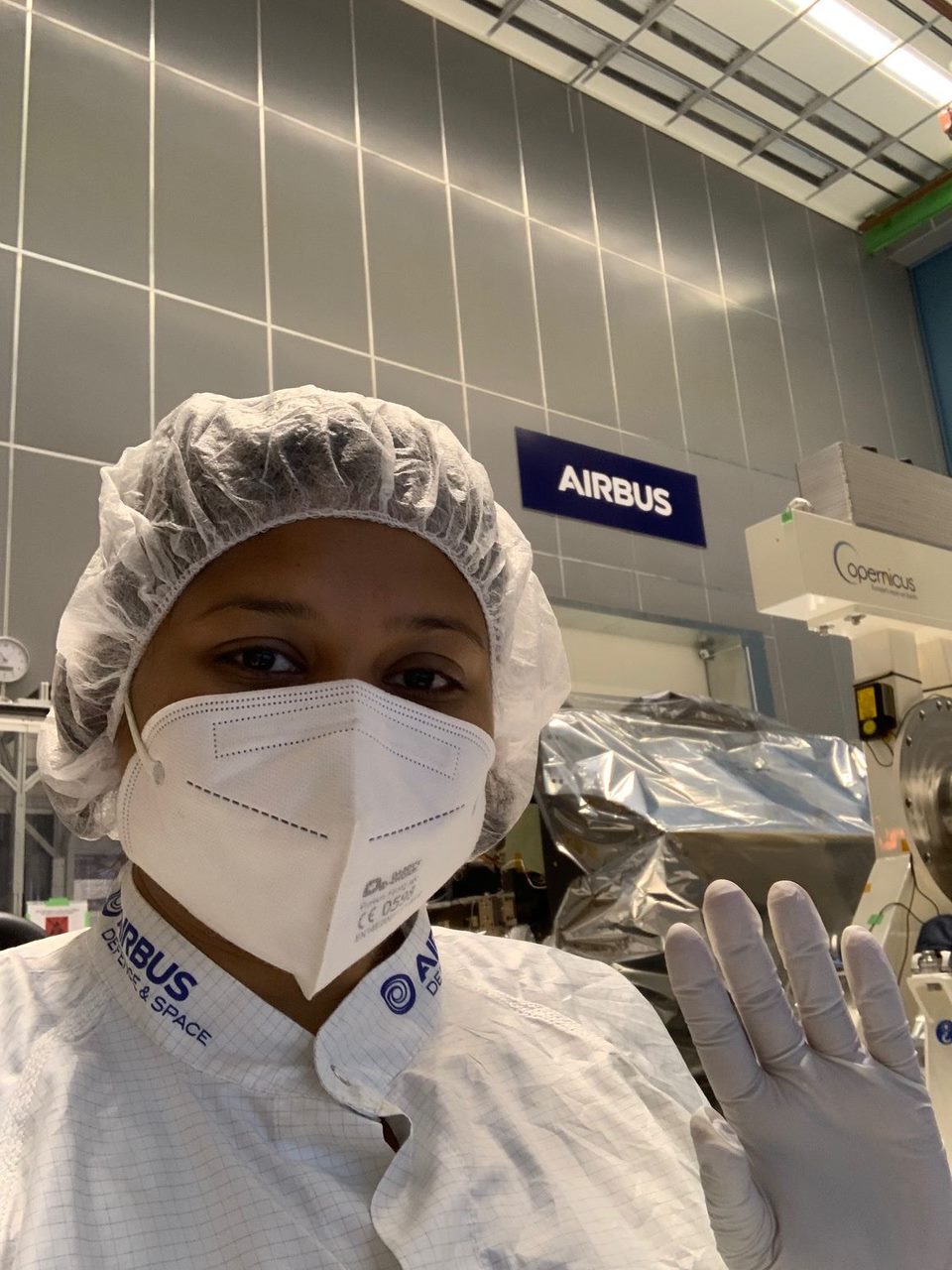
It was an excellent opportunity to learn, we had a team of about 19 people, and we were all trying to make things simpler for everyone at the core of our process. One day I remember we had an alert for one of Galileo’s Earth sensors, as they happen to be sensitive, they keep on looking at the IR difference between Earth temperature and the cold dark canvas of space. This alarm was triggered by the currently melting Artic/Antarctic ice caps which happen to create pointing inaccuracies transitioning Galileo satellites in Safe Mode. The team was asked to manually upload countless commands to the entire satellite fleet, which led me to take the initiative to push the management to approve an automated procedure that would check, upload and verify the execution of all Artic/Antarctic telecommands.
In 2017 I decided to pursue the MSc in Space Engineering at the university of Bremen which was starting for the first year as a join endeavour between DLR, Zarm Institute and University of Bremen. A great program but the transition from work to school was tough. As part of my thesis, I had a particularly valuable experience with DLR working on a project called EDEN ISS, designed to build self-sustaining greenhouses in near sterile environments. They currently have a greenhouse built with two repurposed shipping containers producing fresh food such as Feld salad, Peppers, Kohlrabi and Tomatoes for the winter crew at Neumayer Station in Antarctica. My thesis provided an extension of the EDEN ISS subsystems and concept into large-scale greenhouse for Martian long-term mission. After graduating, I found a job opening in Munich which was being tenured by an Airbus employee which introduced me to Frank Jorritsma and to the amazing Talent acquisition team. I also had already heard great feedback from my colleagues and friends, it was an obvious choice for me.
I was also one of the lucky ones who attended the interview in person back in 2019. “The old days” *chuckles, but also a great experience to meet the team in person. Thank you to everyone at HR and the Talent Acquisition teams for giving me a great onboarding experience.
What is your position and what does it entail?
Currently, I am a Functional AIT engineer currently working for Sentinel-5/UVNS’s and Sentinel-4/UVN-BCD’s optical instruments at Airbus Defense & Space.
My day-to-day tasks include a range of fields from rigorous software and hardware integration to perform full scale testing campaigns including thermal vacuum tests, EMC and environmental testing, vibration and acoustic testing, etc depending on the engineering or flight model for the optical payload. On Sentinel-5 UVN payload, I started quite early in the Phase D activities which involved coding the test libraries, performing electrical integration (performing electrical checks on the incoming units, subsystems and optical assemblies before integrating them into the supporting electronics), debugging test sequences to verify the functionality of each unit, subsystems and overall end to end functions. After the first block of in-house testing, I was heavily involved in the thermal vacuum test campaign at iABG in Munich last year.
In an optical payload, everything is controlled and commanded by a main computer called ICU (Internal Control Unit), which subsequently powers the support electronics for the different spectrometers and optical telescopes. Furthermore, the mechanisms are also a crucial part of Sentinel’s mission to move and calibrate the optical telescope. The spectrometer data is then transferred through to ground systems. These make up the operational chains that my team and I performed functional tests on in Munich, along with our different partners and my team.
We are currently a team of 6 and I am so grateful for our relentless support to each other and strive for perfection. I want to thank them all for their amazing support. Our contributions and hard work are celebrated by the AIT department as well as the project managers.
Below you can find my team and myself (left) just after completion of the IIM (Intermediate Instrument Model) TVAC campaign. Now integrated, Airbus Toulouse are currently running similar tests that we do, but with the platform integrated.
Currently, we are at the stage of building our PFM (Pre-flight model) one iteration out of four, which all will fly. The current stage consists of building our end-to-end chains and incorporating the OGSC (Optical ground control equipment) and MGSE (Mechanical ground support equipment) into our environment. My main task this year is to prepare for EMC and environmental test campaign, which is planned to start before Christmas, for the pre-flight model. This includes EMC test, vibration test, acoustic test and basically shaking and testing the model to ensure survival during launch.
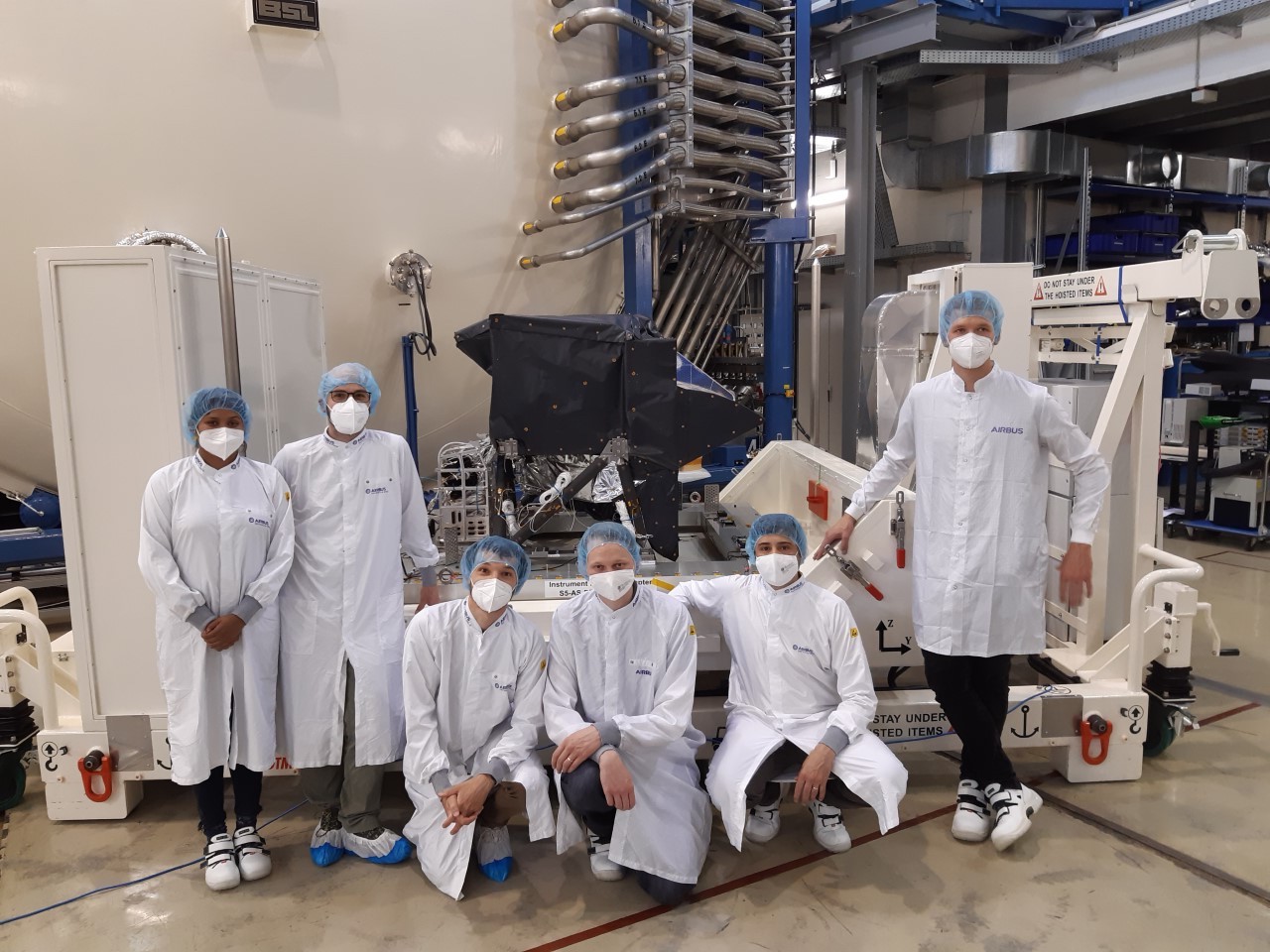
Could you tell us more about Sentinel-5 and its importance for Earth’s observation?
The Sentinel-5 mission consists of a high-resolution spectrometer system with a UV-VIS-NIR-SWIR spectrometer observing the earth in nadir mode with a wide swath. It is embarked as a Customer Furnished Item (CFI) on the MetOp-SG A satellite which is operated by EUMETSAT.
The main objective of the Sentinel-5 mission is to perform atmospheric measurements, with high spatio-temporal resolution, relating to air quality, climate forcing, ozone and UV radiation and providing daily global coverage.
For Sentinel 4, we are working on third generation model. Their purpose is very similar in monitoring molecules in our atmosphere. To note that Sentinel 4 is on a geostationary orbit, allowing it to focus on Africa and Europe. Sentinel 5 on the other hand is in a lower Earth orbit, focusing on analysing our lower atmosphere. Different kinds of data working in tandem. Another dimension of observation added to one of our many eyes in the sky.
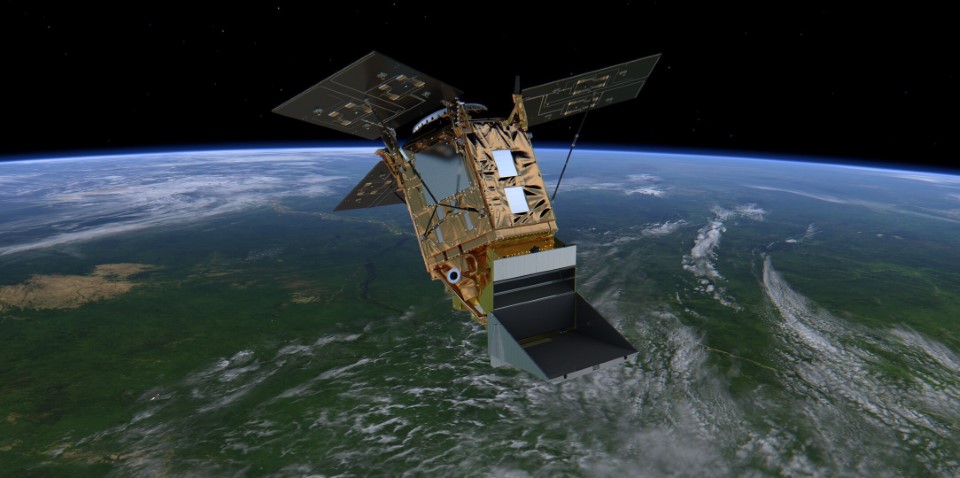
It is critical to keep an eye on what our climate is doing. Personally, it’s all a matter of satisfaction. I happen to be a recently certified PADI diver, and I’ve had the chance to dive in some exotic and amazing places to witness the desolation left behind in our oceans, below and beneath. The climate has a direct impact on each element of its very fragile chain, it is our duty to analyze its every aspect in the hope of offering my children and grandchildren a better future.
Did COVID impact in any way the work you do and the project overall?
For the first month, February to March of when COVID hit, we all were working from home. It got to a point where my work, which happens to be very hands on, became very hard and consisted solely of coding. It all came at a time when we had just started the functional testing, and we were full of doubts. We were building libraries and test sequences which were untested and required to be tested on real hardware.
Our department decided to separate us into a blue and red team. This way, we progressed quite rapidly but always kept our distance.
Since the summer 2020, we are now back at full throttle and the difference is imperceptible.
What is your definition of innovation?
Innovation comes from a very specific mindset. You can be innovative in anything you do.
I’m a strong believer in the little efforts that can lead to huge leaps. How do we build a satellite? We start with the little things. We write down the minute details, create small work packages and move forward from there. The true innovations stem from the roots of each thing.
It’s a little bit like what we are doing with Sentinel. It’s all about looking at it closely, the small details that make up the grand innovations.
What’s a fun fact about you not many people know ?
I’m a BIG sci-fi reader. I loved Firefly, Issac Asimov collections, Dune collection, the Expanse series (books and tv-series) *laughs AND, I’m an avid traveler.
I had the chance to visit over 44 countries and lived in 4 of them, wanting to explore the mountains and oceans around the globe.
Sometimes, after a hard day’s work, I come home and open the 100 Dives of a lifetime which I plan on doing ALL (well, at least most!).
Next on my travel list is Indonesia if the covid restrictions allow it. It’s funny because most of our precious coral is dying, but not there. I want to see the beauty of it for myself.
If you weren’t doing what you are doing today, what would you be doing?
If I could, I would be a PADI explorer, but sadly, our bodies cannot handle constant diving. When I was young, I wanted to be a surgeon but coming to a family of engineers, it is hard to make a case to do out of the norm, so I reluctantly chose to be an engineer. But I am grateful that I did, it gives me satisfaction to work on a project that will help sustain our planet.
Finally, a few words about the Roundtables you’ll be hosting.
The last session, for example, focused on identifying the key triggers that help young girls around the age of 8 select STEM related GCSE subjects. Providing parents and schools with a bundle of activities and newsletters can prove to be a helping hand that might trigger that curiosity.
As an example, one of the activities would be to head out, find a puddle, collect a sample and analyse its contents under a microscope with the goal of finding a Tardigrade (the toughest little micro-organisms that can survive drought, an ice-age or even space radiation). Make sure to join in!
Get your little ones curious: Thomas Boothby: Meet the tardigrade, the toughest animal on Earth
That’s all for today. Thank you, Tejal for taking the time to answer these questions which fully reflect the dedication and passion that ATG Europe holds at its core.
